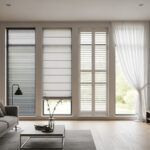
In the competitive world of custom manufacturing, combining CAD tools with your ERP system is a move toward greater efficiency and accuracy. Integrating 3D modeling and CAD with your manufacturing ERP software can give your company a significant advantage. This is especially true for configuring, pricing, and quoting … or CPQ for custom manufacturing and specialized product offerings.
This article explores the benefits of integrating 3D modeling as part of a CPQ for custom manufacturing. Connecting CAD programs directly to your ERP software can transform the way your business operates.
Empower CPQ for Custom Manufacturing with 3D Modeling
In complex manufacturing environments, product configurators are powerful tools that optimize everything from order entry to production and material procurement. However, they are often missing a real-time link with engineering drawings created in Autodesk Inventor or other CAD programs.
A solution like Frontier CADFlow makes the connection to your ERP for manufacturing seamless. The result is a CPQ solution that accelerates product design, reduces costs, and delivers products that align perfectly with customer expectations.
Frontier CADFlow automates the creation of detailed 3D models, drawings, and manufacturing data, specific to each uniquely configured order. In concert with the ERP’s product configurator, this automation not only ensures accuracy but also eliminates data redundancies.
Let’s delve into the 4 key benefits that this integration offers to custom product ordering and manufacturing:
1. Enhanced Customer Visualization

Frontier ERP includes built-in CPQ for custom manufacturing complex products.
Including 3D visualization in the quote-to-sale, the CPQ process transforms customer interactions. As users select configuration options, a 3D model rendering displays in real-time, offering a visual representation of the customized product.
Customers can interact with the model, choosing different options such as colors or hardware. Letting customers see how the options they choose affect the price gives them more confidence when ordering. It also provides a record of the selected options. This CPQ for custom manufacturing of complex products streamlines the quoting process, shortens sales cycles, and increases sales.
Visualization also enhances effective communication between the customer, dealer, sales reps, and manufacturing, so everyone is on the same page. Offering product customization is good, but only if your sales process can ensure the personalized products are also error-free.
2. Faster New Product Development
In the ever-evolving world of manufacturing, speed is crucial. CADFlow connects your 3D and CAD drawings directly to your custom manufacturing ERP software. The manufacturing ERP configures the options selected by your dealers or customers. It then automatically generates cut lists and BOMs (bills of materials) for inventory and production.
It is critical for an effective CPQ for custom manufacturing that the ERP has access to current inventory levels and production schedules. Otherwise, it can only provide estimated promise-by dates.
This seamless CAD-ERP-CPQ workflow reduces time-to-market for customized products. It also gives your business a competitive edge through its ability to quickly adapt to changing market demands.
3. Improved Manufacturing Performance and Product Comprehension
Effective communication between departments is pivotal for efficient manufacturing. CADFlow’s integration helps bridge the gap between design and production by providing comprehensive 3D models on the shop floor.
Shop floor workers have access to the full view of the 3D model to better understand its assembly and attributes. They can “explore” the model’s measurements, sub-assemblies, and components to ensure they manufacture the product to the exact specifications. These models enhance product understanding across the manufacturing floor, increasing efficiency and minimizing errors.
The CAD tool defines assemblies that drive Frontier manufacturing software’s multi-level work order structure. This integration reduces redundancy by avoiding the duplication of both product and bill of materials (BOM) rules. As a result, this tight linkage between engineering and production processes results in more streamlined operations.
4. Save Time and Effort
Custom configurations can be time-consuming and resource-intensive. However, CADFlow streamlines the engineering process by leveraging existing models and configuration rules. For example, with a custom design request that stretches the usual dimensions, you don’t have to start from scratch. This helps cut down on engineering time and costs.
Engineers can utilize their existing CAD design skills when developing product models. With CADFlow, Frontier ERP’s parametric product configurator easily recognizes the design rules and constraints from Autodesk Inventor. The system flags any violations and reports them back to the user, ensuring the integrity of the design process.
Three Options for Model Data
Every manufacturing business is unique. Custom manufacturing businesses are even more so. When integrating your 3d modeling CAD program with your ERP and CPQ for custom manufacturing, choose wisely. Opt for a flexible implementation, so you have options for storing product model data based on your requirements:
1. Model data housed entirely within ERP:
In this scenario, the ERP software drives the generation of the ordered product. The CAD program generates the drawings, manufacturing documents, and model images.
2. Model data housed within CAD:
Here, the ERP supplies the customization options for order entry. The CAD program applies the rules and defines the materials. It then returns detailed configuration and material requirements to the manufacturing ERP, along with the configuration-specific model.
3. A combination of both:
This approach optimally utilizes the strengths of both applications. For example, the CAD program may already calculate a configuration value such as an elliptic arc length. You can share calculated values with your ERP. This reduces the complexity of the configurator and eliminates redundant information or calculations.
Enhancing Product Comprehension and Communication
Throughout the sales order and customer quote entry processes, CADFlow delivers exceptional communication capabilities. Model renderings visually represent configuration options, ensuring customers and internal teams grasp the product’s potential. The CPQ for custom manufacturing highlights any violations of design constraints, ensuring accuracy from the very beginning.
For a more in-depth understanding, a full view of the 3D model is just a double-click away. This view offers access to dimensions, sub-components, and material information, empowering everyone involved with precise insights.
Conclusion
For custom product manufacturers, the integration of 3D modeling and CAD with your manufacturing ERP enhances configuring pricing and quoting. Executives who focus on connecting data can usher in a new era of streamlined operations, reduced costs, and increased customer satisfaction.
The formula is CAD + ERP = Better CPQ for custom manufacturing. By embracing this innovative approach, businesses can thrive in the complex landscape of make-to-order and engineer-to-order environments. The result? A competitive edge that propels your business to new heights of success.



